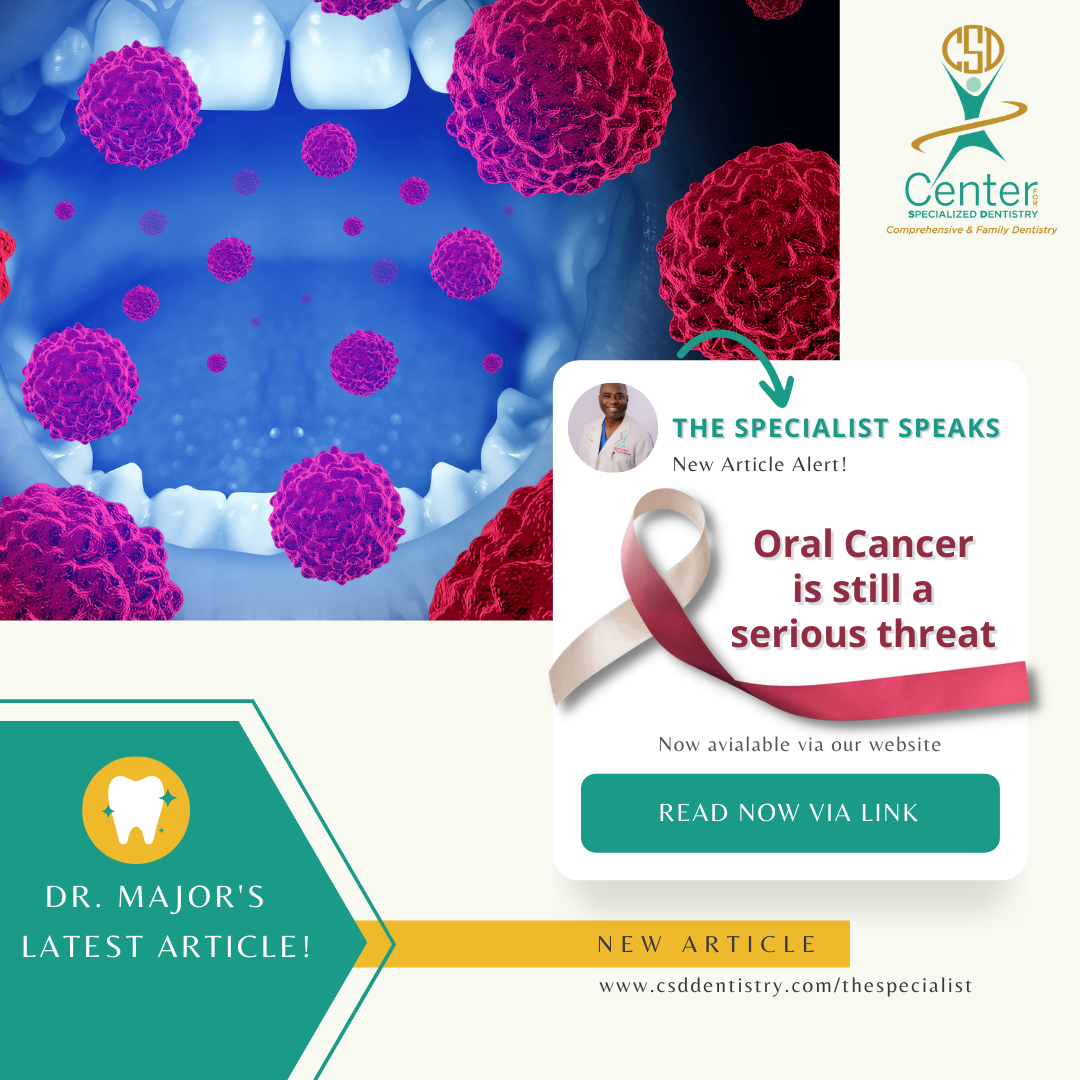Oral cancer is one of the deadliest diseases, but misconceptions about the disease is common. Screening for oral cancer is an important part of any comprehensive dental exam.
In this column, we will discuss oral cancer prevention and treatment.
Oral cancer is not rear. Mouth and throat cancers rank sixth among most common cancers worldwide, according to the World Cancer Research Fund International. Although oral cancer risk increases after age 50, not all forms of the disease are related to age. A growing number of young people are developing the disease, due to a possible link between the cancer and sexually transmitted forms of the human papillomavirus (HPV).
According to the latest WHO data published in 2018, Oral Cancer Deaths in The Bahamas reached 14 deaths. The Bahamas is ranked 89th in the world.
Oral cancer appears as a growth or sore in the mouth that does not go away. Oral cancer; which includes cancers of the lips, tongue, cheeks, floor of the mouth, hard and soft palate, sinuses and pharynx (throat) can be life threatening if not diagnosed and treated early. More than 90% of oral cancers occur in the lining of the mouth, tongue and lips. They are usually referred to as squamous cell carcinomas. Your dentist will examine your mouth, tongue, throat and lymph nodes for any lumps, sores or discoloration.
There are four main types of oral cancers:
Tongue cancer occurs in the front area of the tongue. The most common type of tongue cancer is squamous cell carcinoma. This type of cancer is found in many of the body’s tissues, including: the skin and respiratory tract.
Lip cancer is a disease in which malignant (cancerous) cells form on or in the lips. Most lip cancers start in squamous cells (outer lining or skin) and may spread into deeper tissues. Patients with lip cancer may notice abnormal patches of white tissue or other types of sores on the lips that will not heal. Sometimes lip cancer does not present any symptoms at all, although it may be found during a routine dental exam.
Gum cancer is often mistaken for gingivitis because it begins in the upper or lower gums. Eventually lesions or tumors form and dentists typically are the first to notice signs of gum cancer during routine dental examinations.
Jaw cancer typically originates in the jawbones (primary jaw cancer), although cancers from other tissues can spread to the jaw (secondary jaw cancer).
Risk Factors: A risk factor is anything that increases your chance of developing a disease. Having risk factors; however, does not necessarily mean you will get cancer. Therefore, it’s important to know your own risk factors and discuss any concerns with your doctor.
Oral cancer usually appears as white or red patches on the gums, tonsils or the lining of the mouth.
Other symptoms include:
- swelling in your neck
- a lump in your cheek
- difficulty swallowing or chewing
- feeling like something is caught in your throat
- trouble moving your jaw or tongue
- weight loss
- constant bad breath
The future outlook for oral cancer varies depending on which part of your mouth is affected and whether it has spread from your mouth into surrounding tissues. The outlook is usually better for mouth cancer that affects the lip, tongue or oral cavity. As with all cancers, if diagnosed early, a complete cure is often possible in up to 9 in 10 cases.
See a dentist regularly for checkups and a comprehensive exam. Early diagnosis and prompt treatment is key to reducing and managing oral cancer in The Bahamas.
Dr. Kendal V. O. Major is Founder and CEO of Center for Specialized Dentistry which is a comprehensive family dental practice operating in Nassau and Freeport. He is the first Bahamian Specialist in gum diseases and dental implants since 1989. He also is a certified Fastbraces provider. His practice is located at 89 Collins Avenue, Nassau at (242)325-5165 or [email protected]

White cancerous patch on side of tongue (Leukoplakia)

Cancer of the Soft Palate

Squamous Cell Carcinoma on the cheek





